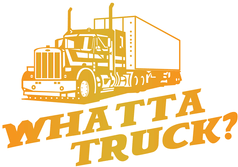Digitization of shipping documents: pros and cons, expert opinion
Even if you`ve just started out in freight transport, you`ve definitely heard the term “Bill of Lading” many times.
A Bill of Lading or B/L is a document that indicates what kind of cargo is transported in a truck from one point to another. The B/L is required for each cargo and is an important legal document that shows what cargo the driver and carrier are responsible for, as well as the amount of cargo transported and where it came from.
B/L plays a vital role in the supply chain as a whole and in any movement of goods. With the B/L, the driver and the carrier start to manage transported goods. This document also includes a description of the seals to show the sender and recipient that the shipment wasn`t damaged during the transit.
And, of course, the Bill of Lading goes with the Proof of Delivery (P/D) of the cargo, these are necessary documents for the carrier to issue invoices for payment after the service was provided and the delivery of the cargo was completed. While the B/L indicates that the carrier took the legal possession of the cargo, P/D then releases the carrier and driver from this ownership once the cargo is delivered to the recipient.
In the time of countrywide use of smartphones and tablets, digitization has become a vital shipping document.
Here are some reasons why:
Less hassle, more time on driving. For drivers automating paperwork means they no longer need to keep track of paper documents.
Instead, it all can be digitally controlled with apps like Transflo Mobile + and others.
Faster invoicing and getting payment. Digitization helps eliminate the routine tasks of fleet` staff such as managing and sorting paper documents.
Social distance at the docks. In the era of the COVID-19 pandemic, the use of eB/L and eP/D made driver`s exchange with shippers and recipients safer and helped organize contactless, socially remote pickup and delivery at cargo docks.
Reduced waiting time. It is clear that eB/L and eP/D will continue to automate the interaction of drivers at the sender`s and recipient`s sites, Schrier says. For example, using information on eB/L, an application such as Transflo would be able to contact the sender or recipient when the driver is within a certain distance from their facility and initiate a remote check-in process for the cargo receipt or delivery, and transfer information about the load and the driver in advance.
“This will help to reduce driver`s downtime and eliminate all the problems truckers face when picking up and delivering cargo at the shipper`s and receiver`s sites,” said Doug Schrier, vice president of strategy for Transflo.




